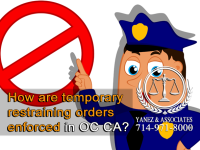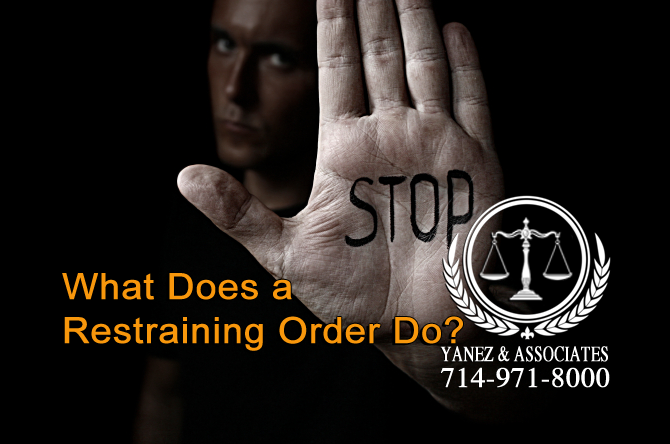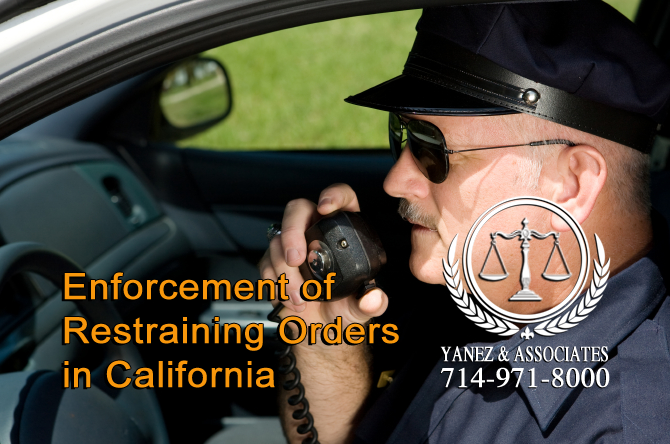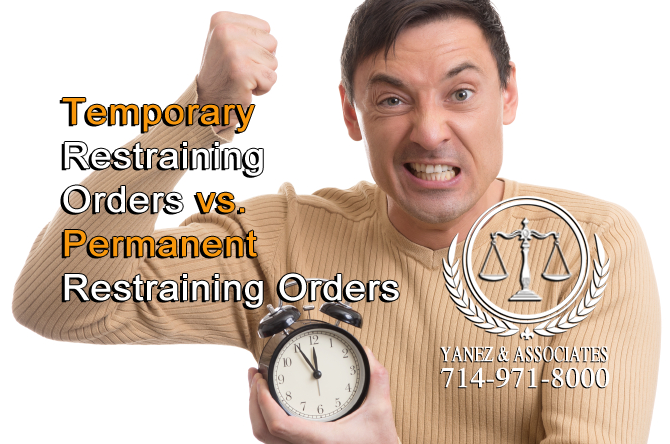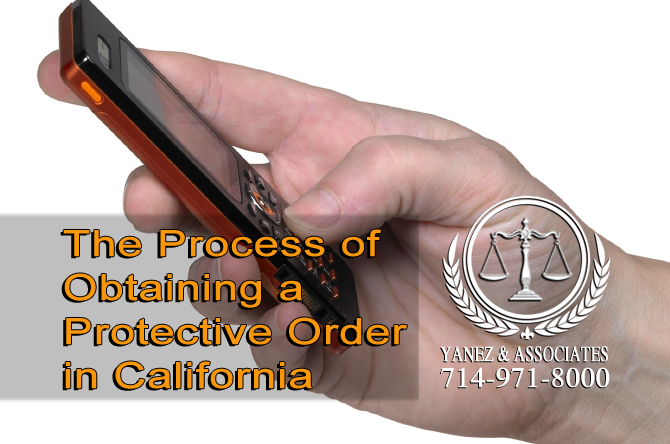FAQ: How are temporary restraining orders enforced in OC California?
How do I enforce a Temporary Restraining Order in Orange County?
In California, temporary restraining orders and permanent restraining orders have some differences and some similarities. Protective orders are intended to do just what the name implies - provide protection to one person from another. When a protective order is disobeyed, law enforcement’s job is to step in and ensure that the appropriate actions are taken and consequences faced.
There are four main kinds of restraining orders: elder abuse restraining orders, violence in the workplace restraining orders, civil harassment restraining orders and domestic violence restraining orders. Each serves a specific purpose, and is meant to provide protection for one party from another.
What Does a Restraining Order Do?
Restraining orders can protect parties in several ways, depending on the specifics of why it was issued in the first place. Every situation is unique, and every restraining order should be tailored to the needs of the person requesting it.
• Your restraining order may prevent the restrained person from contacting you or your children, your relatives, roommates, and more;
• Your restraining order can require the restrained person to stay away from you, your children and other relatives, roommates, and more;
• Your restraining order may require the restrained person to remain a distance away from your home, workplace, children’s schools, children’s workplace, and more;
• Your restraining order may require the restrained person to move from your shared home;
• Your restraining order may disallow the restrained person from owning or possessing a gun;
• Your restraining order may require the restrained person to follow certain child custody and child support orders, including new orders that are a part of the restraining order;
• Your restraining order may require the restrained person to pay spousal support;
• Your restraining order may prevent the restrained person from spending time with specific pets;
• Your restraining order may require the restrained person to continue providing insurance benefits to you or your children;
• Your restraining order may require certain restrictions be put on the restrained person financial situation, including requiring him or her to pay bills, and preventing him or her from spending large sums of shared money;
• Your restraining order should be tailored to your needs, and may vary from this list by including more or fewer items.
There are certain things that a protective order cannot do as well, including ending a marriage or registered domestic partnership, or establishing parentage or parental rights. While a restraining order may be a part of a divorce, or a child custody or support order may be a part of a protective order, these are separate legal issues that cannot be determined because of a protective order.
Enforcement of Restraining Orders in California
When a restraining order is created and signed by a judge in California, it will be added to a computer system in California called CLETS. This is a statewide system in California, and all California law enforcement has access to it. It is important that if you do move outside of California, you let your local law enforcement know about your restraining order. The volume of protective orders that exist in the United States is large, and it is best to let them know that you are in a new area, and have an active protective order.
Permanent and temporary restraining orders are enforced in the same way in California. Enforcement may depend on the terms of the court order.
If you need to enforce a protective order in California, whether temporary or permanent, take action as soon as possible.
- Your first step should be to call the police. Always have a copy of your restraining order on hand, and if possible, give a copy to local law enforcement as a precaution.
a. The police can take the restrained person to jail and/or issue a fine. - Make sure to record any proof of the violation.
• Get a police report.
a. Write down your account of what happened, including the who, what, when, where, how, and why if you know.
b. If you have received written or digital contact from the restrained person, copy it. This can include notes, letters, voicemails, emails, text messages, online posts, etc.
c. If injury occurred as a result of the violation, have copies of medical records. - Distribute copies of your restraining order to your friends, family, neighbors, and anyone involved in your life or the lives of your children. This can be more difficult to do with a temporary restraining order than a permanent one, so take action quickly and chose the most important people first: the people that you and other protected persons spend the most time around.
- Your local district attorney could file criminal charges if the restrained person has violated the terms of the restraining order. Contact the DA if your protective order has been violated, or for more information.
- Violating any court order may lead to a person being in contempt of court. You may file a civil contempt action with your local court; it could lead to fines or jail time for the restrained person.
- Contact an attorney. If you and your loved ones are safe for the moment, taking legal action is a good option. Contact restraining order attorneys for assistance as soon as possible.
What If My Restraining Order Was Not Created in California?
In the United States, protective orders are valid in all 50 states, regardless of where they were created. It is always best to let local law enforcement know that you have a restraining order, especially if you have reason to worry that it may be violated.
When you are new to California, if you want to have your restraining order to be included in our statewide computer system (CLETS), you may register it.
To register your protective order, you’ll need a form called Order to Register Out-Of-State or Tribal Court Protective/Restraining Order (CLETS). Include a copy of your protective order when you file this form with the court.
You can also give a copy of your order to the local police station.
Temporary Restraining Orders vs. Permanent Restraining Orders
A temporary restraining order in California can protect you throughout the legal process - or even until it starts.
An Emergency Protective Order (EPO) is the first type of temporary protective order you may request in California. It may only be obtained by calling law enforcement, and is available 24 hours a day for issuing within 24 hours. It lasts for 7 days, and can be followed by a Temporary Restraining Order.
A Temporary Restraining Order can be issued once you have asked the court for a Permanent Restraining Order. It is intended to last up to 25 days, by which time your first court hearing regarding your Permanent Restraining Order should take place.
Permanent Restraining Orders usually last as long as three years, at which time you may request a new Permanent Restraining Order if you believe it is necessary.
Basic Overview: The Process of Obtaining a Protective Order in California
If you wish to obtain a protective order in California, there is not a filing fee.
Contact law enforcement to obtain an Emergency Protective Order within 24 hours. The EPO should last about seven days, within which time the judge may upgrade you to a temporary restraining order, which will be valid for up to 25 days, until your hearing can be held for a permanent restraining order.
It is required for you to serve the person you wish to restrain with papers notifying them of the restraining order hearing, and the potential restraining order against them. At the restraining order hearing, both sides will have the opportunity to share their view of what happened. The protected person absolutely must be present at the hearing in order for the protective order to be granted. If a permanent restraining order is not granted, the temporary restraining order will end the day of the hearing. If it is granted, it will be effective in place of the temporary restraining order.
Keep in mind that it is in your best interest to have an attorney present during the process of obtaining a protective order. It can be an emotionally charged time, and it may be difficult to face an abuser in court. Your attorney will be one step removed from the situation, and may be able to provide better guidance so that you make informed, rational decisions rather than emotional ones.
Orange County, California Temporary Restraining Order and Enforcement Lawyers

Looking to hire Orange County, California Temporary Restraining Order Lawyers and Enforcement Lawyers?
If you have any questions about obtaining or enforcing a restraining order in California, contact an attorney to discuss your concerns. Your first step should always be to ensure that you and your loved ones are safe, and then take legal action. The attorneys at Yanez & Associates are here to help you. We offer free initial consultations with no obligation: contact us today to schedule yours. In your consultation, we’ll get to know you and your case, and you can get to know us and our policies and fees. We look forward to hearing from you soon.

